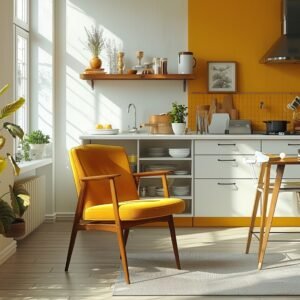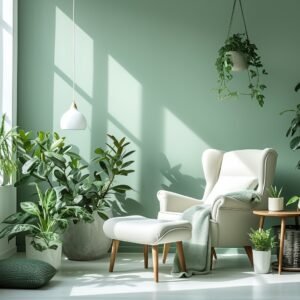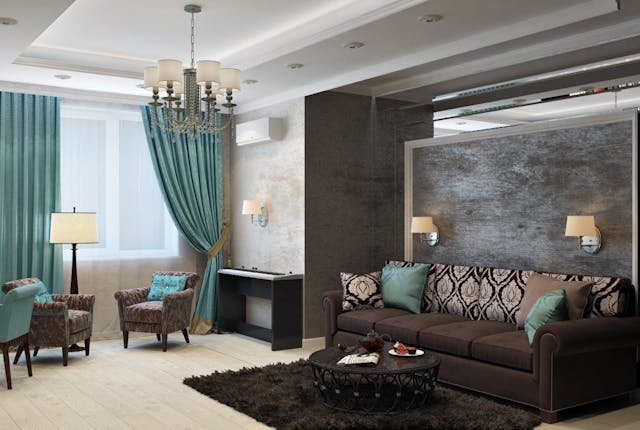When it comes to crafting a home that truly reflects who you are, choosing the right colors can be such a transformative experience. As someone who’s spent years designing spaces with love and attention to every little detail, I know firsthand how color can shape the atmosphere of a room and even influence how we feel within it. So, let’s explore how you can create a home that feels warm, inviting, and authentically yours by selecting the perfect color palette.
Understanding Color Psychology

Colors are so much more than what we see; they hold the power to evoke emotions, shift our moods, and bring a room to life. Blue, for example, is known for its calming properties. Imagine a soft sky blue in your bedroom or a deep navy in your reading nook. Both evoke a sense of tranquility and are perfect for spaces where you want to unwind and feel at ease.

Yellow, on the other hand, has always been a color that radiates happiness and energy. I once transformed a kitchen with a warm, buttery yellow, and it instantly became a favorite gathering space for my family. If you’re thinking of brightening your kitchen or even a sunroom, try out a cheerful yellow. It’s a simple yet impactful way to bring positivity into your home.

If you’re drawn to nature and want to bring a sense of balance and renewal into your home, green is a wonderful choice. Green shades connect us to the outdoors, bringing in that fresh, grounded feeling we all crave. For living rooms or home offices, I often recommend incorporating greens through accent walls, plants, or even soft furnishings like throw pillows and rugs.
Assessing Your Space: Lighting and Layout
Before diving into any color palette, take a moment to assess your space. The way natural light flows into your home plays a huge role in how colors appear. What might look like a soft neutral in the store could change dramatically in your home, depending on your lighting. I always suggest testing out swatches on your walls at different times of the day.

And don’t forget to consider the layout! Smaller rooms benefit from lighter shades that can open up the space, while larger rooms can carry deeper, moodier tones that add coziness. And remember, a color that works beautifully in your living room might not feel the same in your bedroom. Each space has its own personality, and your color choices should reflect that.
Creating a Cohesive Color Scheme
A harmonious color scheme ties your whole home together and makes it feel connected. One of my favorite techniques is the 60-30-10 rule, a classic in interior design. Sixty percent of your space should be the dominant color, 30% a secondary hue, and the remaining 10% is where you get to have a bit more fun with accents. For example, soft gray walls (60%), dusty blue sofas (30%), and gold decorative accents (10%) create a calm yet stylish space.

If you’re unsure where to start, try incorporating patterns sparingly, such as a patterned area rug or throw pillows. I recommend mixing them with solid-colored furniture to balance the visual interest.
One trick I love for maintaining flow is to use different shades of the same color throughout your home. You might paint your hallway a light blue, your living room a deep navy, and your bedroom a pale aqua. The continuity creates a peaceful atmosphere.
Finding Inspiration: Real-Life Examples and Trends
If you’re feeling stuck, there’s no better place to start than real-life examples. I always encourage my clients to take inspiration from spaces that resonate with them. Whether it’s a cozy terracotta-themed living room or a chic, minimalist bedroom with pastel hues, seeing how others have used color can spark new ideas for your own home. Pinterest and Instagram are my go-to platforms for finding these real-life examples.

Current trends, like earthy tones and soft pastels, are making a big comeback. Think of rich terracotta, soothing olive green, or warm beige. These hues bring a sense of calm and connection to nature—perfect for creating a retreat from the hustle and bustle of daily life. And if you’re a fan of bold accents, try adding pops of color through accessories.
Lastly, don’t forget that your home should feel like you. Trends are great, but the best spaces are the ones that make you feel at ease and reflect your unique style. So take your time, experiment with colors, and most importantly, have fun with the process. Your home is a reflection of you—let it shine!



